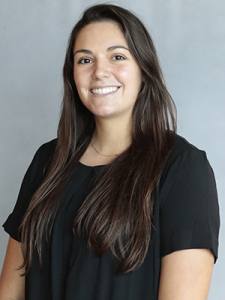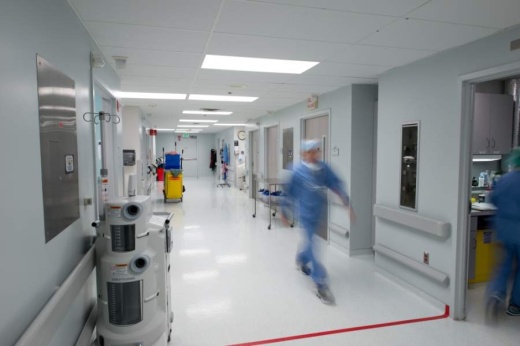“She is the only person who leaves our home,” she said. “And I want to minimize her risk.”
Rodriguez, a lifelong resident of Gulfton and president of its super neighborhood, spends much of her time advocating on the behalf of the most vulnerable and at-risk members of her community, including her 65-year-old mother, who cleans and maintains hotels.
In southwest Houston, a convergence of risk factors, such as aging populations and poor access to health care for some, could bring about a higher percentage of hospitalizations among residents than other areas of the city, data from the University of Texas Health Science Center at Houston suggests. For areas such as Gulfton, nestled alongside Bellaire, health officials must also take into account the area’s density. Gulfton contains over 14,600 people per square mile, making it more dense than Boston, Chicago and Philadelphia.
However, density alone is not necessarily a risk factor, and after two months of the coronavirus outbreak upending daily life, more data is emerging about risk factors that make certain areas of town more susceptible to the most severe consequences of an infection.
Risk factors
About 6% of the population of the southwest Houston area was deemed at risk for requiring critical care in an intensive care unit if infected by the coronavirus, according to a preliminary study by UT Health. That is double the risk for the population just north of Hwy. 59 in the Montrose and River Oaks area. In other areas, such as Deer Park and Channelview, the percentage of residents at this level of risk reaches up to 14%.
While some communities, such as Bellaire, West University and Meyerland, benefit from having higher average income levels and better access to health care than other areas of the city, the age of their populations, which skews older, could put residents at a greater risk of the most severe outcomes of the illness.
“What we’re seeing is that it’s not that young children or young adults don’t get ill—and some really do get severely ill—but they have more mild disease,” said Jill Weatherhead, assistant professor of infectious disease at the National School of Tropical Medicine at Baylor University.
In acknowledgment of that vulnerable population, Bellaire and West University Place have started support programs for area seniors, including grocery deliveries and social outreach. Residents age 65 and older make up about 14%-15% of each city, a concentration of seniors that is 50% higher than in Harris County overall.
“Since the start of the COVID-19 crisis, the Good Neighbor Team and Senior Services staff have heightened efforts to keep these seniors connected and to assist with special needs,” said Susan White, West University’s parks and recreation director.
Gulfton sees another set of risk factors, such as high population density, higher incidences of chronic illness, poverty, immigration system fears and less access to health care.
“I was just sitting on my patio, and I saw a family that is serving as a day care site for families that have to go to work, and they have three generations living in one apartment and teenagers coming and going,” Rodriguez said. “The needs here make it so much harder to try to comply with social distancing.”
Federally qualified health centers, such as Legacy Community Health, which offer medical services to under- and uninsured residents, were some of the first to identify high-volume clinics that needed testing resources. One of its first testing centers was set up near its southwest Houston clinic.
“We know a lot of our families have multiple family members in a smaller place. ... It can spread very quickly,” Legacy Chief Medical Officer Dr. Vian Nguyen said. “So we were very focused on getting the education out about social distancing and how it is not as easy for someone who can’t lock themselves in their own room.”
Rodriguez said she has worked with other community members and area property managers to distribute information about the virus in some of the dozens of languages commonly spoken in the area.
As more local data was compiled, health officials began to see troubling trends among communities of color and older residents.
As of April 14, predictions about the risk factor for severe infections are ringing true among the city’s reported deaths. As of press time, all 23 reported deaths were attributed to people with underlying medical conditions, and 19 of those deaths were among those over the age of 60.
“When I look at my numbers, there have been people who have died in their 50s, 60s, 70s, 80s and 90s and in some cases below that,” Houston Mayor Sylvester Turner said. “So the focus right now should be on saving people’s lives. ... In this case patience can save, if not your own life, then somebody else’s.”
Of the first 23 residents to die from the coronavirus in Houston, 52% were African American, 26% were Hispanic and 22% were white. In Houston as a whole, however, 22% of the population is African American, 44% is Hispanic and 24% is white, according to census data. In the Gulfton area, specifically, 70% of the population is Hispanic, according to a 2017 Kinder Institute report.
“There is the fear of even leaving your home at this point,” Nguyen said. “They are aware that it’s getting serious, and they don’t even want to get care to manage chronic illness. ... Some patients have called to ask if they tested positive that we report that to [Immigration and Customs Enforcement].”
Directing resources
While the numbers are still too low to draw broader trends about who is experiencing the most severe effects of the coronavirus in Houston, public health officials sounded the alarm about communities that could be facing them already.
“There is a disproportionate number of African Americans that appear to be suffering from the worst consequences of the virus,” Houston Director of Emergency Medicine Dr. David Persse told City Council members April 8.
“As a nation, we have got to do something to address that because here is the consequences of those decades of disparities that are coming into play and impacting people’s lives that really should never have occurred.”
While early neighborhood-level data shows much of southwest Houston on the lower end of Houston’s highest coronavirus infection rates per capita, some public health officials caution against forming conclusions based on the cases reported in a city that was slow to receive the means necessary to conduct large-scale testing.
“The number of those who get diagnosed depends on who has access to getting a test, and we already know there are social disparities in health care,” Persse said.
As of April 20, the Gulfton area had 7 cases per 10,000 residents, and Meyerland has 18 cases per 10,000 residents. Because Gulfton is so dense—with a population close to 55,000—its estimated total case count of close to 40, according to ZIP-code level data, looks smaller in comparison.
Bellaire, West University Place and Southside Place each had fewer than 1 case per 10,000 residents.
In anticipation of various disparities in access to care, Legacy Community Health set up one of its first testing sites in southwest Houston in early March and expanded to offering testing at all eight of its clinics in Houston by March 31.
“We had the structure in place to handle this,” Nguyen said. “We have patients who can’t pay anything, and we still are able to commit to providing care for them.”
One of the most effective ways to stem the spread of the coronavirus is by wearing a face covering, public health officials have said.
When Harris County Judge Lina Hidalgo enacted an order to require residents to wear masks in public through the month of May, some were concerned about those who would face penalties for not wearing one when information and resources are limited in some communities.
In response, Harris County constables, Houston City Council members and Jim “Mattress Mack” McIngvale arranged free mask giveaways throughout the city.
As the state begins to reopen some segments of the economy, officials need to monitor high-risk members of the community, Turner said.
The city of Houston established a task force of city, community and health care system representatives April 23 to coordinate an outreach campaign that provides public health education, masks and supplies for the city’s under-served communities. A Health Equity Response Fund was also established to collect donations for the efforts.
“As we restart and move forward, we must ensure those vulnerable populations are not left behind,” Turner said.
Matt Dulin and Hunter Marrow contributed to this report.





